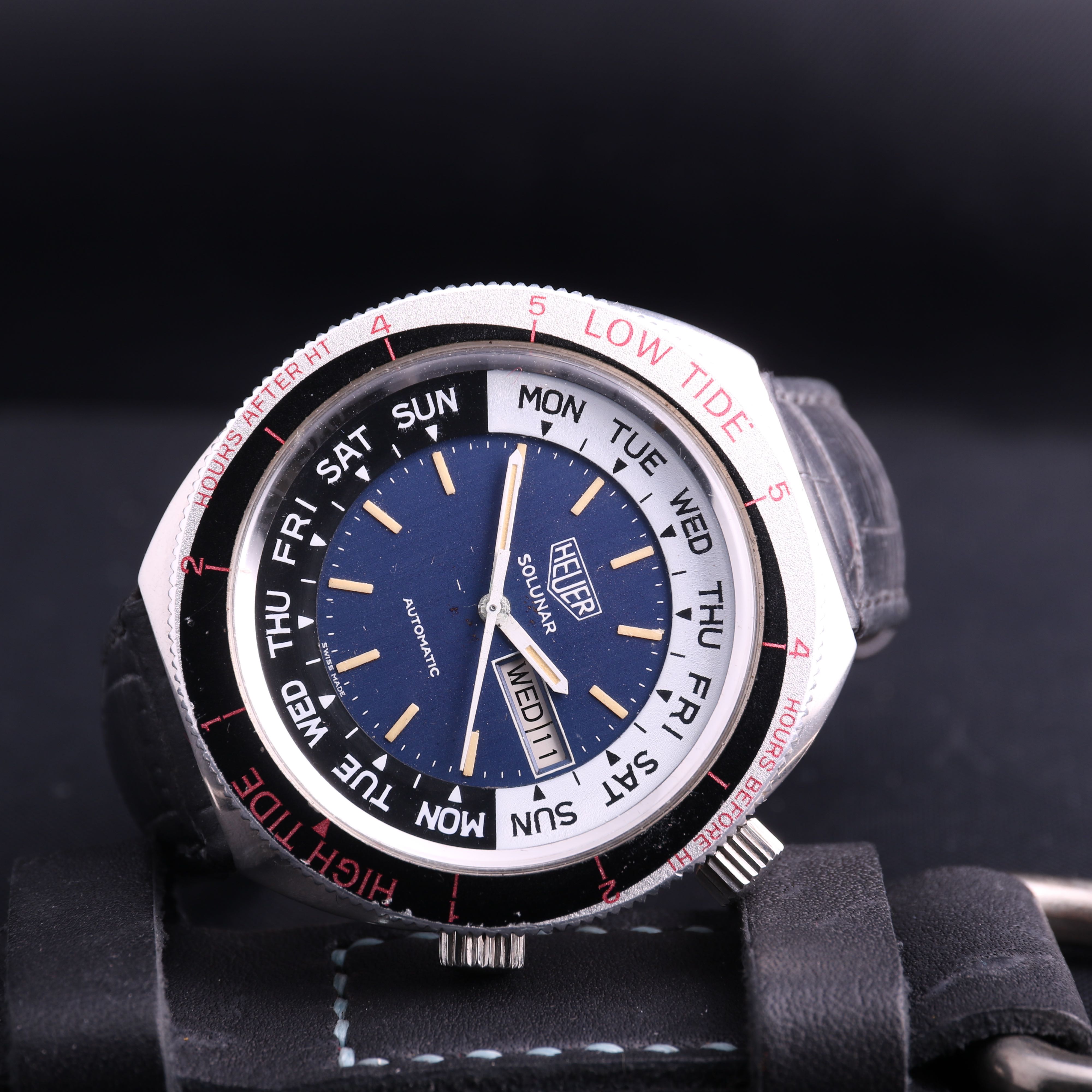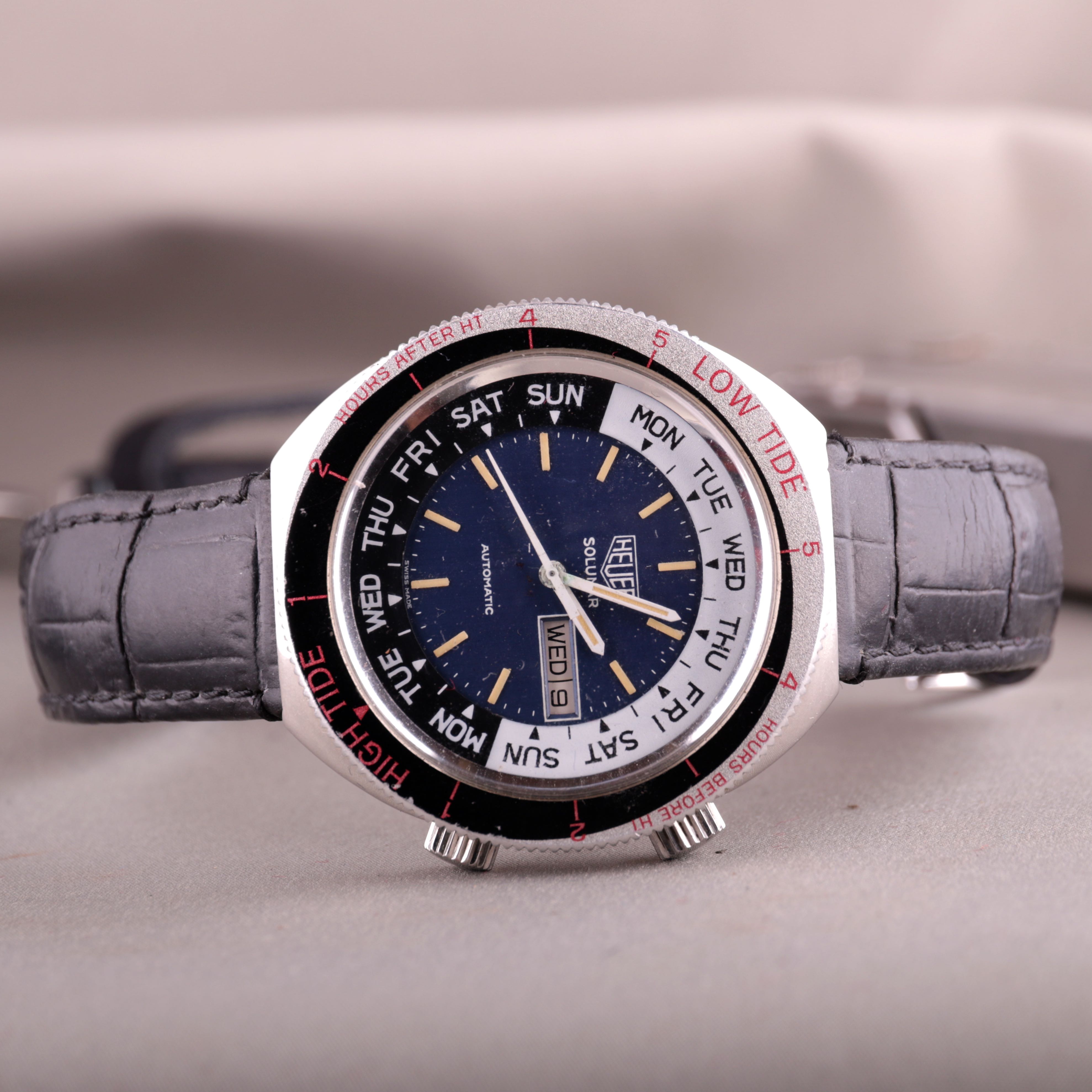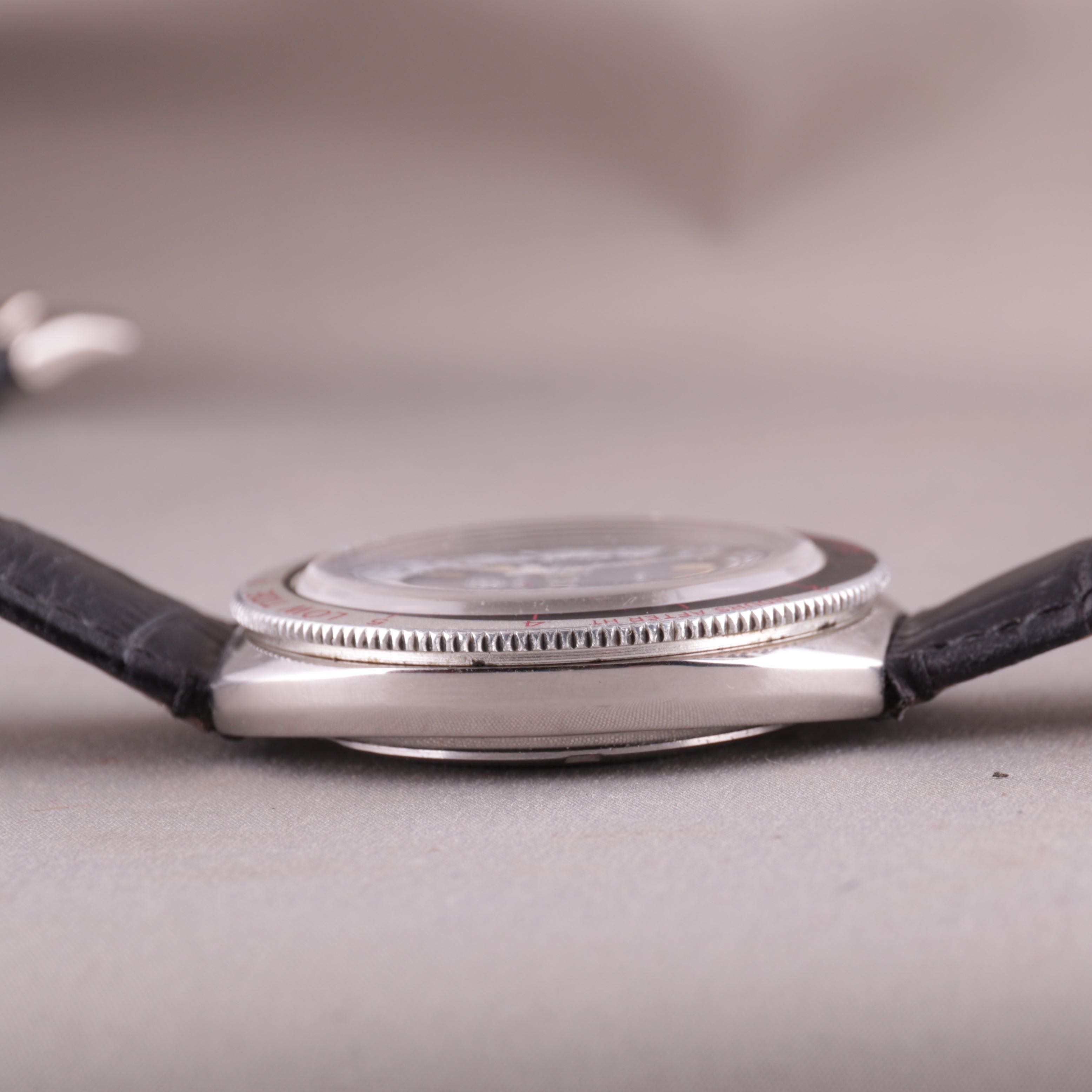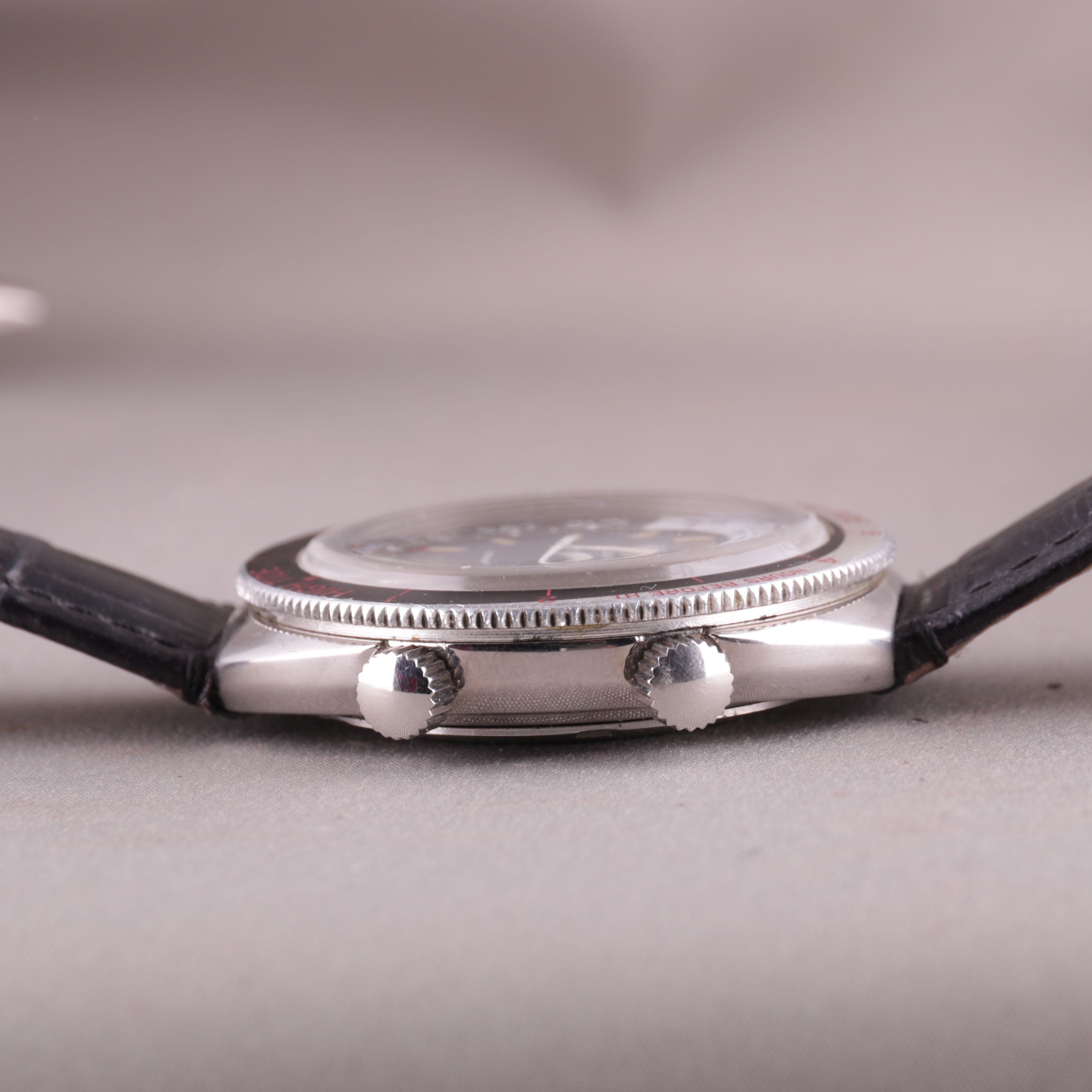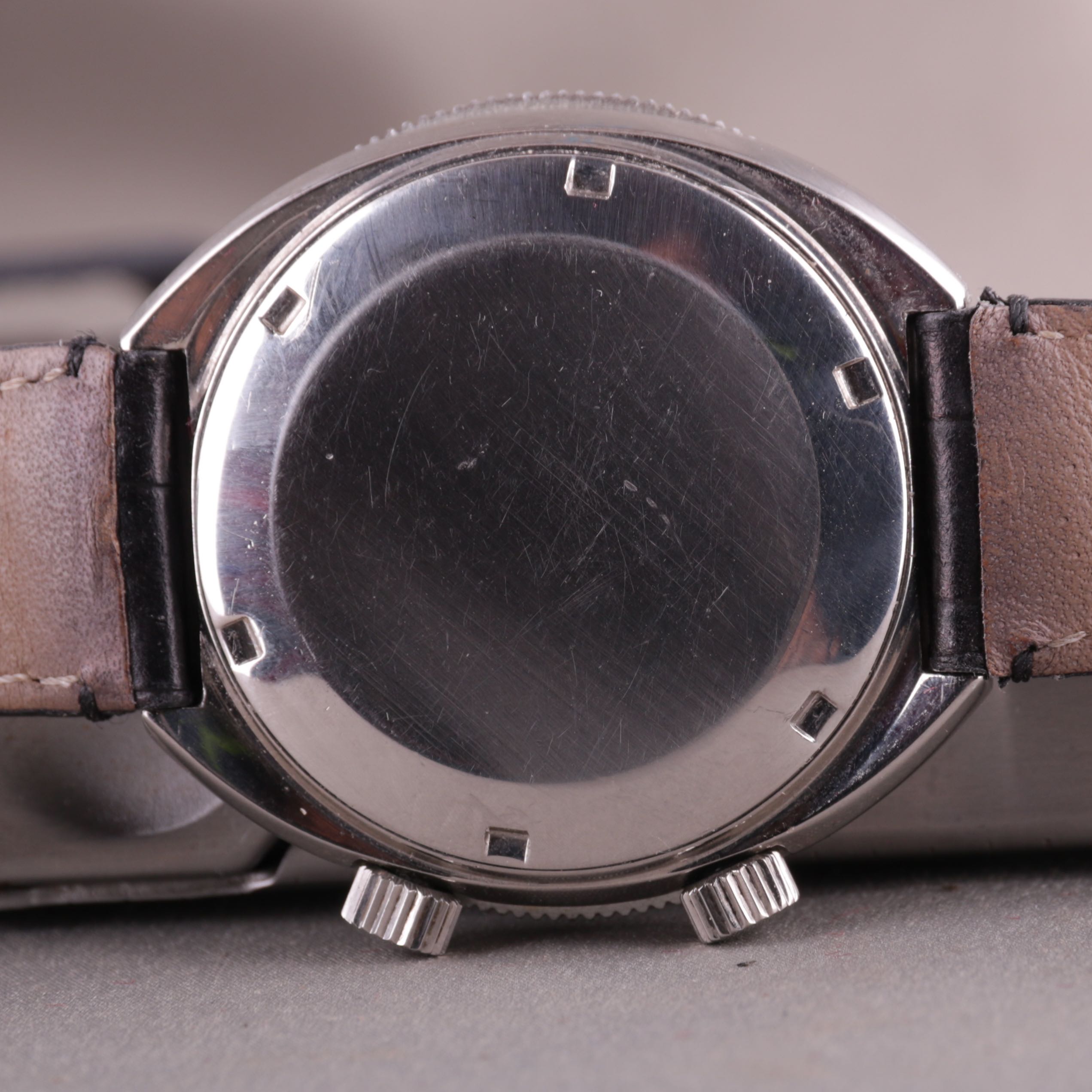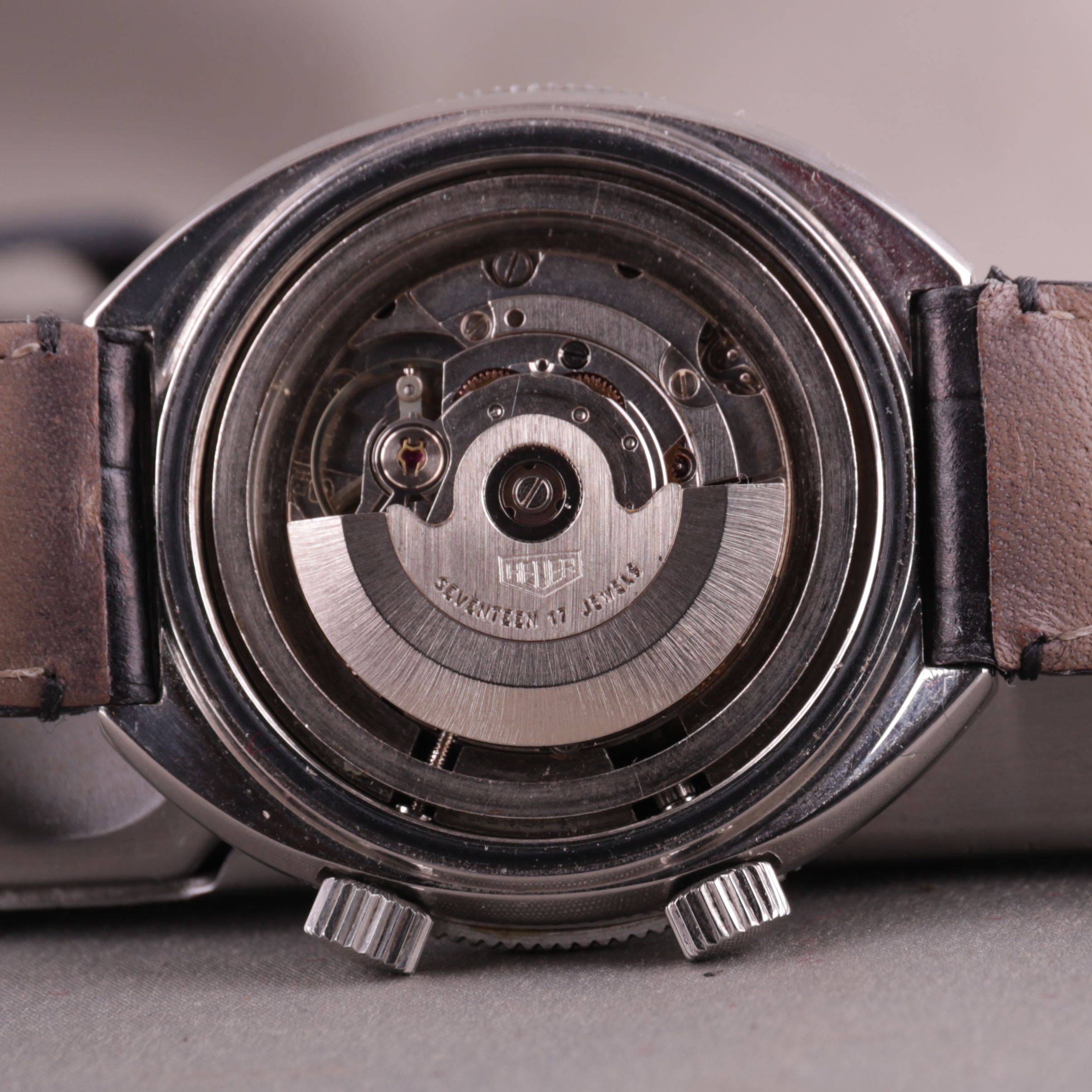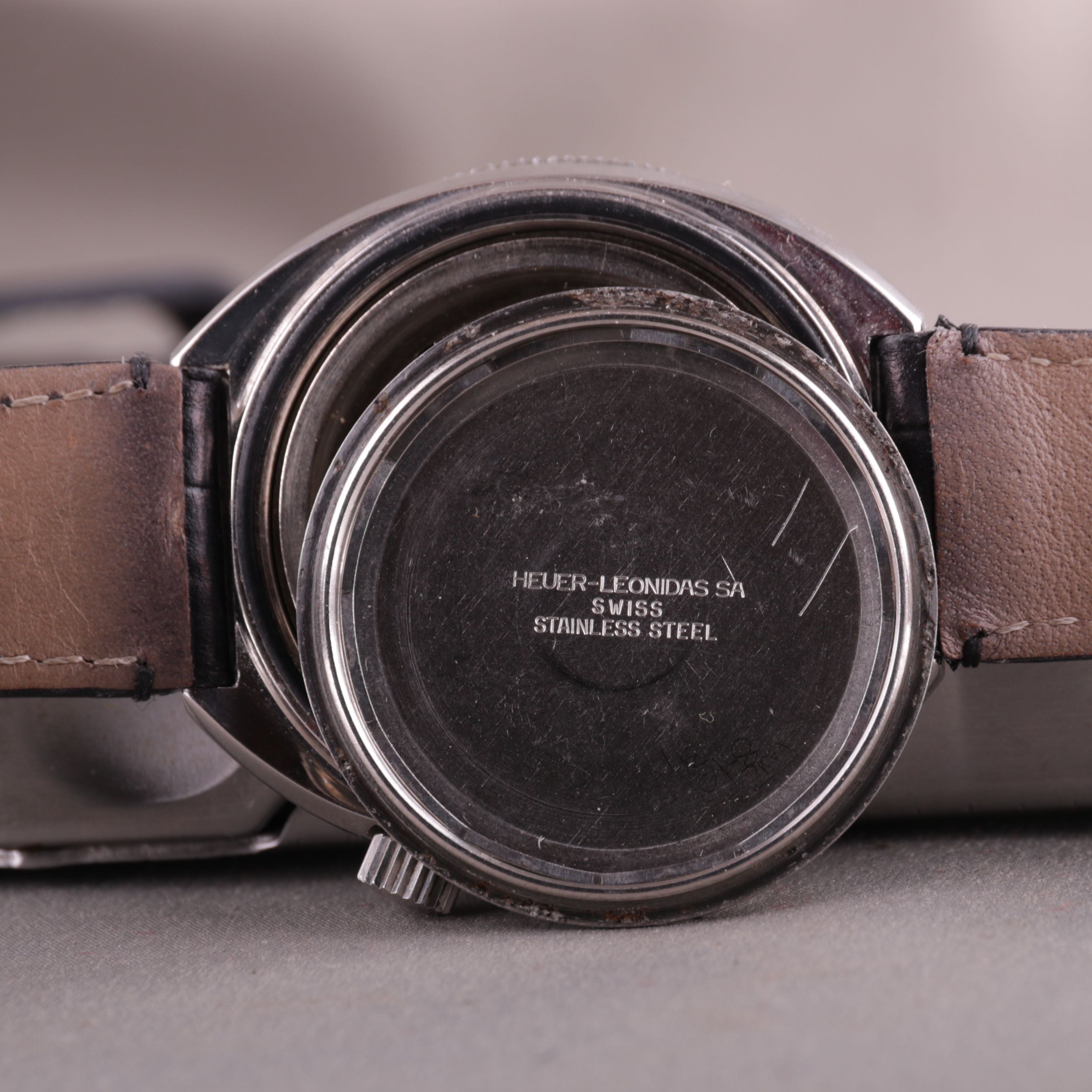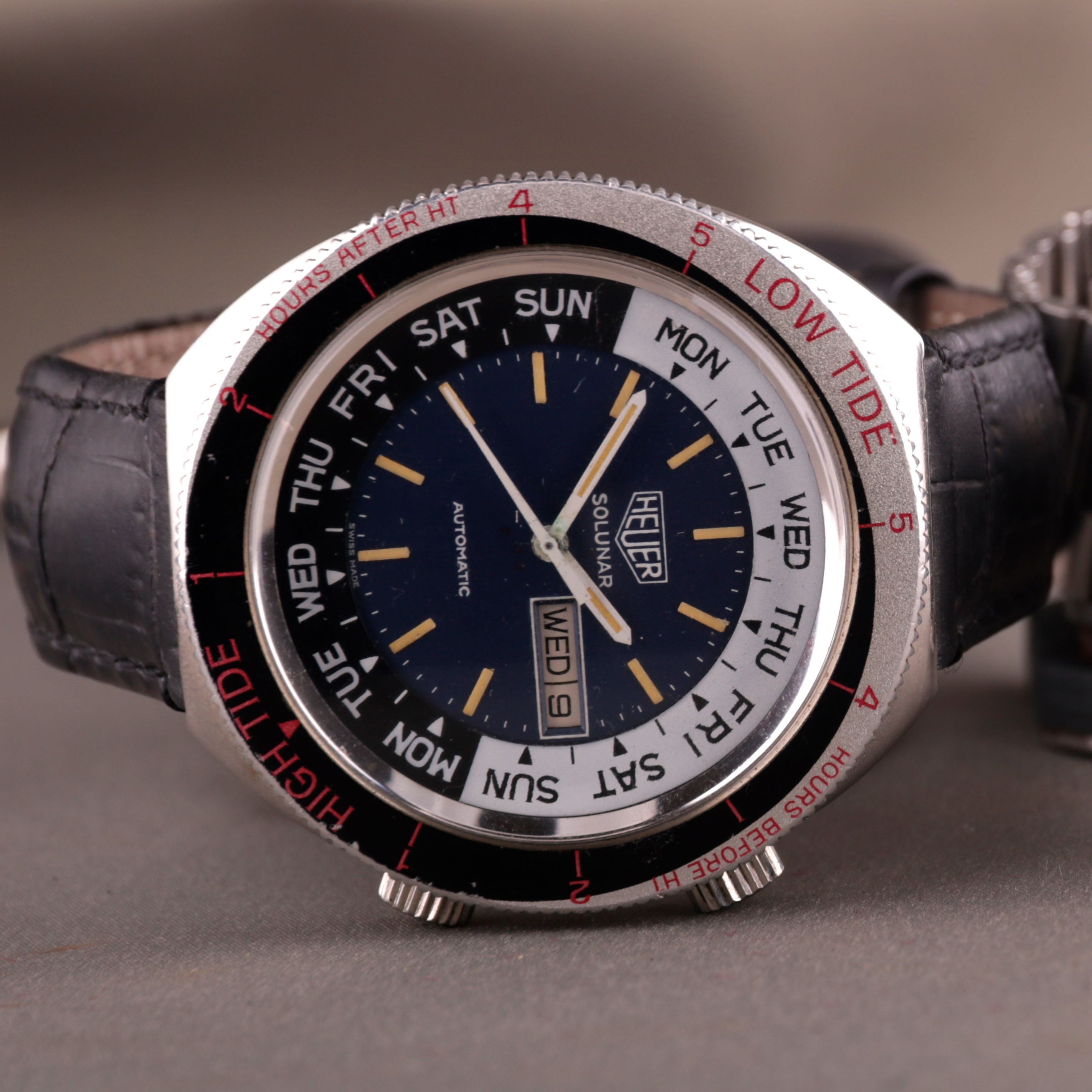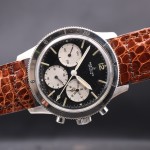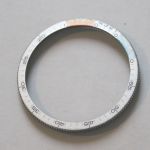Description
Launched in 1976, the second-generation Solunar (the name being a portmanteau of “Solar” and “Lunar”) is a tool-watch designed to show the time of low and high tides over a 2 week period. The watch was aimed at fishermen, and is a fascinating example of both niche marketing and how a watch can be used for much more than simply telling the time.
The design of the Solunar is dominated by the large external Black and Silver bezel and the internal two-week Black and White disc. These take up most of the “face” real estate, leaving the Blue dial itself looking quite small.
The hands are in keeping with the design used on other contemporary models, helping to give the Solunar a Heuer- family appearance.
So, given that the Solunar has a conventional 3-hand movement, how does it indicate high and low tide? The answer lies in the combination of the internal two-week disc and the outer-bezel.
1. Two-Week Disc
OK, a few basics first….bear with me.
As you may know, tides are created by the gravitational pull between the earth and the moon. The timing of high tide is driven by two factors- the rotation of the earth (one rotation every 24 hours) and the moon rotating around the earth (once every ~28 Days). If the moon didn’t move, then high tide would be the same time every day, but life is not that easy.
Given that we have two moving objects, the time of high tide moves each day by (1/28 X 24)= 51.5 minutes (approx.). Now take a look at the bezel- we have 14 days marked over a 12-hour dial. Applying a little more maths:
(12 hours/ 14 days) X 60 minutes = 51.42 minutes between each triangular marker..pretty close to the 51.5 minutes calculated above (let’s be honest- being a few seconds late or early for high tide is unlikely to change whether the fish are biting).
OK, so now that we know why the day markers are spaced ~51 minutes apart, how do you use the inner disc? Let’s say that your fishing holiday starts on a Monday. Simply wait until the exact time of high tide (10.10 as shown above) and then line up the hour hand with Monday…and that’s it. You now have the daily time of high-tide for the next two weeks.
This is helpful, but high tide doesn’t only occur once a day- it occurs twice. So that’s why we need a second scale.
2. Outer Bezel
The outer bezel is also cleverly designed. It shows that there is approximately 6 hours between high and low tide, and therefore 12 hours between high tides.
Simply moving the Red triangle on the bezel to the time of High time (recall: 10.10 in the example shown) now gives you the daily ebb and flow of the tides.
